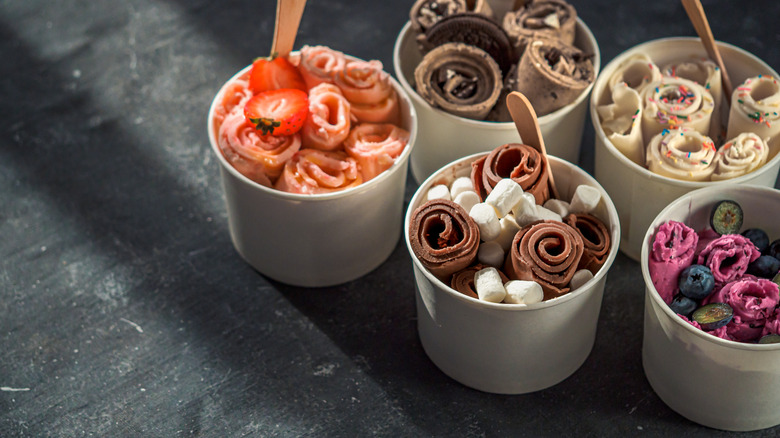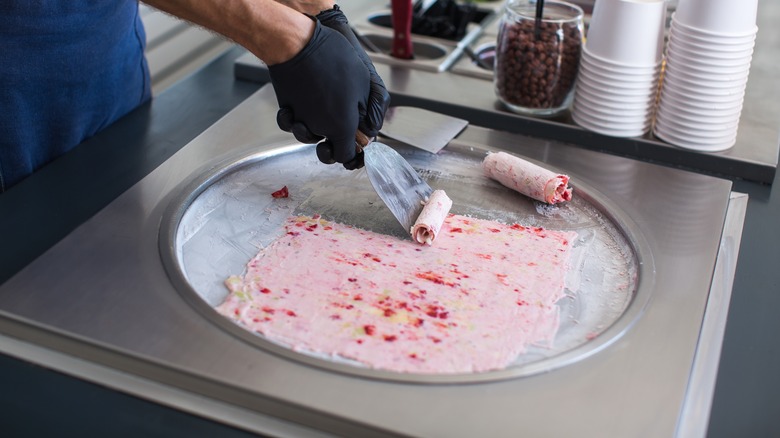How Thai Rolled Ice Cream Made It To The US And Beyond
Social media just might be the best thing that ever happened to the world of food. It also might be the worst, as evidenced by dangerous TikTok health gimmicks. Above all, the internet has allowed for an unprecedented international exchange of culinary ideas. It's not uncommon to see viral foods from other countries, like Vietnam's salted coffee, catching on in the U.S. and beyond. It's happened with many foods now, most of which end up as short-lived fads, but one of the earliest foods to ever experience this kind of social media boost has also proven to be one of the most enduring in popularity. It's an ice cream trend started in Thailand, where it's known as "I Tim Pad." To most Americans, however, it's simply called "rolled ice cream" or occasionally, "stir-fried ice cream."
Rolled ice cream is made from the same basic ingredients as regular ice cream, namely sweetened milk and the flavoring of choice. What makes the Thai style unique is that instead of using an ice cream maker, a chef pours the makings onto a thermoelectric steel plate cooled to around minus 10 degrees Fahrenheit. Everything is mixed together and then spread into a thin sheet. Once it's solid, the chef uses a flat tool, similar to a putty knife, to scrape the ice cream off the plate. This scraping motion causes the ice cream to curl into a roll. The rolled ice cream is then packed into a cup with your toppings of choice.
What makes rolled ice cream so popular?
Rolled ice cream is a recent addition to the dessert world, first gaining attention in the early 2010s. Thailand is most commonly cited as the origin point for this style of dessert, but it has become common throughout many South Asian countries, particularly Malaysia and Cambodia. In the mid-2010s, rolled ice cream parlors began to pop up in the U.S. with great fanfare. One of the first American outlets for the dessert, 10Below Ice Cream in New York City, garnered a slew of press online, kickstarting the virality of rolled ice cream. The dish's unique visual presentation made it an instant hit on social media at a time when Instagram's foodie culture was really beginning to take off in earnest. But it's not just the photogenic nature that makes rolled ice cream a hit.
The best part about rolled ice cream is that customers have far more power over their dessert. Each serving is made to order, and while it always starts with the standard milk base, the add-ins are all up to the customer. Most rolled ice cream parlors offer an array of flavors that you can mix and match. They will also add toppings such as chocolate chips and fruit directly to the ice cream as it freezes, ensuring even distribution of all ingredients. Even if you don't have a rolled ice cream parlor near you, it's still worth your attention because imitating this style is one way you can make ice cream without an ice cream machine.

